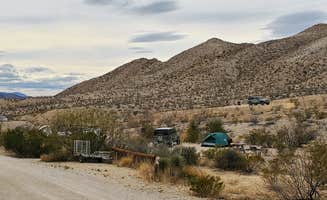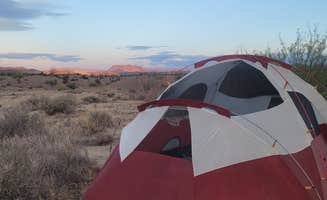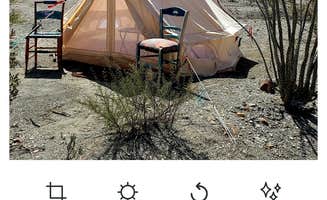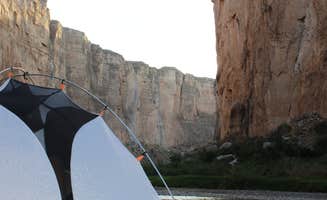Tent camping near Redford, Texas centers around Big Bend Ranch State Park, Texas's largest state park at over 300,000 acres with elevations ranging from 2,300 to 5,100 feet. The region experiences extreme temperature variations with summer highs regularly exceeding 100°F and winter overnight lows sometimes dropping below freezing. Many primitive camping areas require permits obtained during limited daytime hours, with most sites lacking cell service.
What to do
Dark sky stargazing: At Rancho Topanga's tent sites, where campers report "the night sky is unbelievable" and sites are "spaced out" to maximize viewing opportunities. The area's minimal light pollution creates ideal conditions for astronomical observation.
Hiking desert mesas: Explore the unique terrain at Rancherias Spring on the Rancherias Loop, located about 7 miles from the West trailhead entrance. The area features distinct geological formations where hikers can "cross over a high desert mesa" according to reviews.
Fishing opportunities: Visit River District Arenosa where the Rio Grande provides access to fishing spots. One camper notes, "FM 170 between Presidio and LaJitas has plenty of scenery, hiking trails and fishing opportunities."
Rock collecting: The desert landscape near Coyote Crossing offers interesting geological specimens. As one camper mentioned, "it was neat exploring around the hills where you can find millions of years old shells and cool rocks."
What campers like
Incredible isolation: The remote locations throughout Big Bend Ranch State Park create a genuine wilderness experience. At Rincon 1, campers appreciate the "awesome site deep in BBRSP" that requires navigation through rocky terrain to reach.
Wildlife encounters: Coyote Crossing lives up to its name, with one camper reporting, "It's called Coyote Crossing for a reason. Was woken up from the howling of coyotes every few hours. Some were walking around our tent."
Covered picnic areas: Many sites feature shade structures over tables, particularly valuable in the desert sun. At Chorro Vista, campers appreciate "having a shelter over the picnic table" during hot days and windy nights.
Wash stations: Select campgrounds provide dedicated facilities for cleaning dishes and equipment. Rancho Topanga offers "large sinks for washing dishes, and electrical outlets where you can charge your phone" which many campers find particularly useful after long hiking days.
What you should know
Vehicle requirements: Most primitive sites require high-clearance 4x4 vehicles. At Rincon 1, one camper noted, "Most of the path is easy until you leave normal roads at the La Posta site. After the first descent on a very rocky ledge, its mostly managing to keep on the path and navigate a few obstacles."
Water availability: Potable water is scarce throughout the region. At Tres Papalotes, campers should bring all water needed for their stay as there are no on-site sources. The nearest refill station is often at visitor centers.
Tent anchoring challenges: The rocky desert terrain makes traditional tent stakes ineffective. At Rancherias Spring, campers report "the surface on the hill was almost all rock, so instead of tent spikes I used large rocks to secure down my tent."
Temperature extremes: The region experiences dramatic temperature shifts between day and night. At Chorro Vista, one camper experienced challenging conditions: "Saturday night the temps dropped to 15 degrees and us without a heater again did OK."
Tips for camping with families
Supply planning: Purchase all necessary supplies before entering remote camping areas. For Rancherias Spring, campers advise to "purchase gas and supplies in Fort Stockton, Alpine or Terlingua before entering the park because there are no supplies within the park."
Safety precautions: Due to the remoteness, prepare for self-rescue situations. At Coyote Crossing, families should keep "all food products locked in my car which kept them from coming near my tent or bothering me at all" to avoid wildlife encounters.
Visitor center orientation: Stop at park visitor centers during operating hours (typically 8am-4pm) to get current conditions and permit information. Croesus Canyon Camps offers a strategic location "situated between the national and state parks, and between Lajitas and Terlingua" making it convenient for families to access information from multiple sources.
Water conservation: Plan carefully for limited water access. At Rancho Topanga, visitors note the campground is "super reasonably priced" but families should bring extra water containers as refilling opportunities may be limited to visitor centers.










